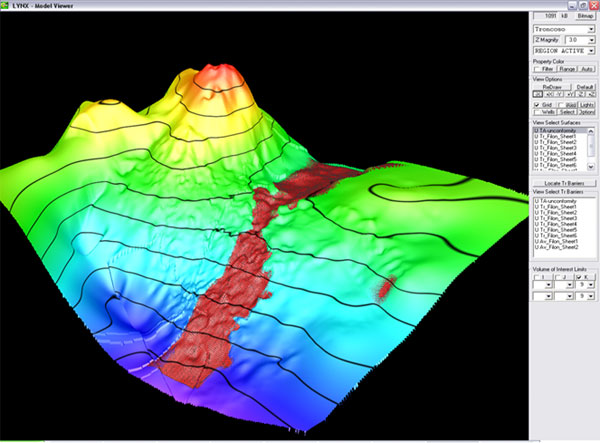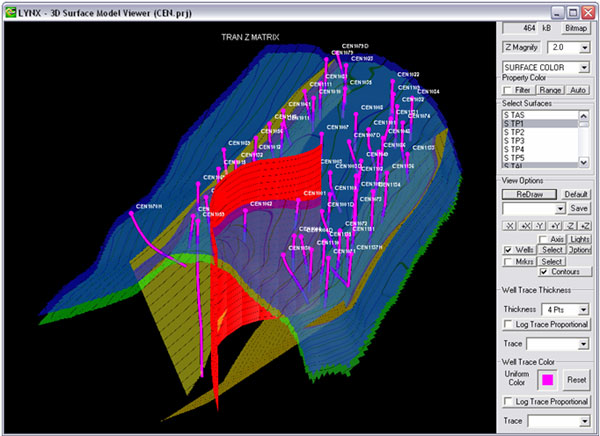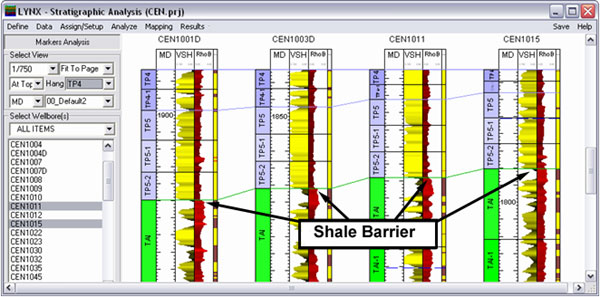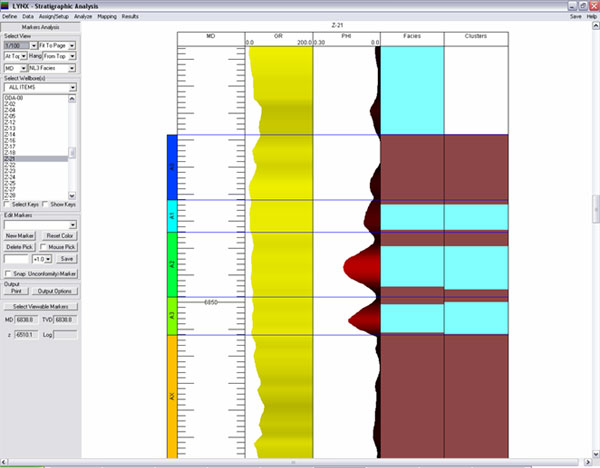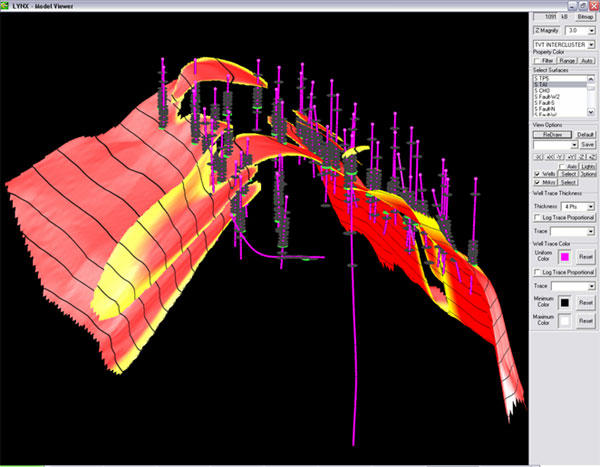 |
Transmissibility Generation |
Capabilities
|
Transmissibility Generation: LYNX can calculate the intersection of any surface (unconformity, volcanic intrusions, etc.) with the simulation grid, locate the grid blocks that intersect the surface, determine the direction that the surface intersects through the grid blocks, and create transmissibility traces for the intersecting surface. The user can then specify the magnitude of the transmissibility multiplier that will be applied to the transmissibility traces. The transmissibility multipliers can be different for each intersecting surface. The same functionality can also be used for faults and regions. Sloping faults can be imported as 3-D fault surfaces and used directly. The 2-D fault traces for vertical faults (or any trace that requires transmissibility modification) can also be imported. LYNX converts the 2-D fault traces to 3-D fault surfaces. Intersection of Unconformity with Simulation Grid
Intersection of Faults with Simulation Grid LYNX calculates the thickness and the vertical locations of the shale “clusters” through facies analysis of the well logs. The intra-layer shale thickness (the shale present within a layer) is calculated and used in generating of the net-to-gross thickness ratio maps. The inter-layer shale thickness (the shale located between two layers) is calculated and mapped for each geological layer. Transmissibility “barriers” are then activated based on user specified rules using the shale thickness values. The inter-layer thickness maps are used to create and populate a transmissibility “barrier” array for each simulation layer. Cross-section view Intra-layer & Inter-layer shales Shale Barriers Between Layers |
